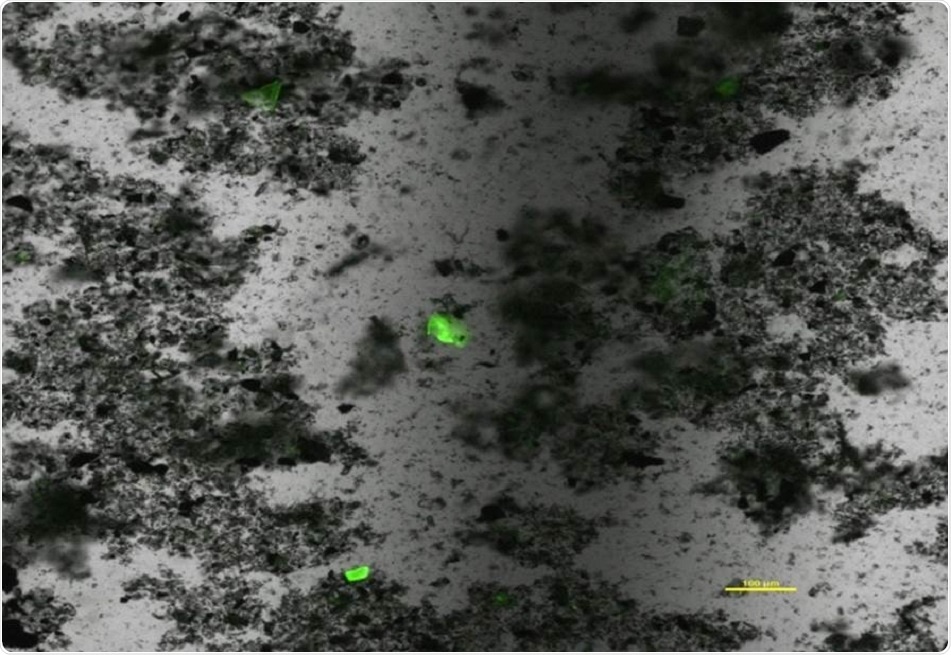Nov 28 2017
A study conducted at the University of Warwick found a novel, inexpensive and innovative technique using a fluorescent dye to effectively identify the smallest microplastics in oceans, which go largely undetected and are potentially harmful.

Smaller ocean microplastics (below 1mm) made visible with fluorescent dye - viewed through a microscope. Credit: University of Warwick
The method has the potential to detect the smaller fraction of microplastics—as small as 20 micrometres—similar to the width of a wool fiber or human hair.
Due to weathering processes, large plastic objects undergo fragmentation over time, reducing them to smaller and smaller particles called “microparticles.” They are the most widespread kind of marine debris in the oceans, and their effect or ability to harm aquatic life is not yet fully studied.
The dye used in the study bound with the plastic particles specifically and made them easily detectable under a fluorescence microscope, enabling the scientists to differentiate microplastics from other natural materials and easily make accurate quantifications of the particles.
In order to test this method, the team sampled surface sea water as well as beach sand from the English coast around Plymouth. Once they had extracted the microplastics from the samples they successfully applied their technique and were able to effectively quantify the smaller fraction of these microplastics.
The team identified a far larger quantity of small microplastics than estimated, considerably more than previous tests would have detected using the established techniques.
These findings contest the existing belief in the apparent loss of the smallest microplastics from surface seawater, and point out the necessity of additional research for understanding the state of plastic waste in the oceans.
The findings also suggested that polypropylene—a common polymer used in food containers and packaging—is the most abundantly found microplastic of this small size and demonstrated the direct impact of our consumer habits on the oceans.
According to Dr. Joseph A. Christie-Oleza, the co-author of the study, understanding how plastic waste behaves in the environment is vital in order to assess future policies accurately.
Current methods used to assess the amount of microplastics mostly consist in manually picking the microplastics out of samples one by one - demonstrating the great improvement of our method."
Gabriel Erni-Cassola, the lead author, University of Warwick
Previous reports indicate that the amount of plastic debris found in the oceans accounts for just 1% of what was already estimated, stressing the need for innovative methods like this to detect the missing 99% of “lost” plastic waste in our oceans.